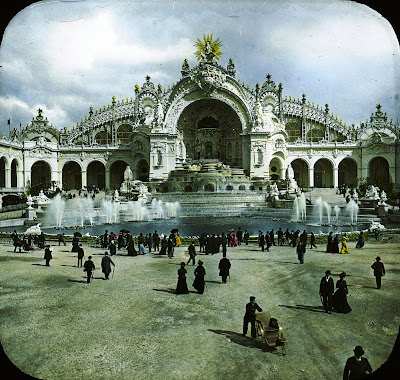Sunday, 28 July 2013
TALL WINDOWS
Can you resist something this large and comforting, with almost human proportions? I didn't think so.
Photo from Berlin city hall by Stephaniè Jade-Mariè Piasdòttir Kjærstad
Friday, 26 July 2013
FICTIONAL FRIDAY: HANDRAILS OF MIDDLE-EARTH
An architectonical observation from the incredibly funny Youtube channel Cinema Sins in the video counting the sins of the first Hobbit film (which by the way contains loads of cool fictional architecture and urbanism).
But what is the explanation for this? Why no handrails? Might just be because it looks good, but that doesn't explain how no one would try to prevent the thousands of casualties which inevitably would be the result of this policy. Visual pleasure vs. security is a debate in this world as well (just think of the organisations for people with impaired vision, who wants there to be gigantic glowing yellow arrows and stripes absolutely everywhere), but it's quite easy to see who won in this one.
Why not include the whole video:
Thursday, 25 July 2013
PALAIS D'ELECTRICITÉ
Ah, those were the days! At the 1900 world's fair in Paris, also called the Exposition Universelle, architectonical decoration was still (very) allowed, and stylishly dressed people would marvel at the amazing new world that the coming century would bring. They had no idea what they were up for.
This optimistic and even enthusiastic buildings was the Palais d'Electricité, simply celebrating the wonder of electricity, which apparently is closely linked with the concept of the semicircle.
One thing is for sure: They don't make 'em like this anymore.
 | |
|
Picture credits: Wikimedia commons
Sunday, 21 July 2013
Friday, 19 July 2013
FICTIONAL FRIDAY: GWEN'S CARROLLESQUE GARDEN
One of the coolest gardens I know, quite clearly inspired by Lewis Carlloll's Alice in Wonderland, a book which I was very fascinated and confused by in my childhood, and still love.
Wednesday, 17 July 2013
CLASSICAL SUBSTATION BUILDING
Walking around my home town today, I just had to take a picture of this wonderful little structure. Architect and year is unknown, but I would guess it's from around 1920, and probably not yellow originally.
There doesn't seem to exist any kind of building which can't be executed in a classical manner, does it?
Tuesday, 16 July 2013
REVIVAL
 |
| The Deichman library in Oslo. Liberal Greek revival, Nils Reiersen 1933. |
During the course of architectural history, it has happened any times that the aesthetic ideals of an early period have once again become important. Different styles, such as Gothic, Egyptian, Baroque and not at least, Classicism, have haunted the drawing boards of architects in different versions even up until today.
 |
| Bragernes church in Drammen. Backsteingotik revival, Ernst Norgrenn 1872. |
Viewing something from a distance provides a person with a certain clarity, an overview which can be hard to obtain when you're in the middle of it. For this reasons, revivals can, in my opinion, be just as great as the originals, although maybe in a different way. Taking a step back has its drawbacks, but that shouldn't be a reason to back off and not to try to do something which you believe would be great.
 |
| National Bank of Greece in Nafplio. Mycenaean (!) revival, Zouboulidis ca 1930. |
This blog has been dormant for many months now, not unlike an architectural language which is abandoned in favour of another, but still stays there, behind the curtains. And this is my attempt at a revival of what Not Another Architecture Student has been. Throughout three years of studies, the blog has been my incidental diary for architectural discoveries, a place to scribble down new ideas, a channel for pouring out love and hate in the realm of buildings and cities, and a way to come in contact with some interesting people.
 |
| Helga Eng's Hall, Blindern. Playful functionalist revival, LMR arkitektur 1994. |
I have now finished the first part of my masters degree in architecture, equivalent to an undergraduate or bachelors degree. During the year to come, I will work full-time as a paid intern in a very interesting architectural firm called LMR arkitektur. Although a relatively old company, they are a curious and innovative bunch, and I'm looking very much forward to learning from them and contributing with what I may have.
 |
| University library at Blindern. Monumentalist revival? LMR arkitektur 1999. |
In the year to come, this blog will again become important. Moving home to Oslo will provide me with a new perspective, and new objects to investigate. One of the places I really want to explore, is the university campus, which goes by the name of Blindern, named after the former farm whose land it now occupies. This is a strange and wonderful place, full of ugly buildings and beautiful parks, loved by many for their contents and by few for their looks and interface. I will probably return to Bergen next fall, but I'll also apply to do my masters at other schools, so nothing is certain. Wish me luck!
Yours truly,
K
 |
| University library at Blindern. Treetrunk revival? LMR arkitektur, 1999. |
PS. Fictional Friday will be back, too!
Subscribe to:
Comments (Atom)





